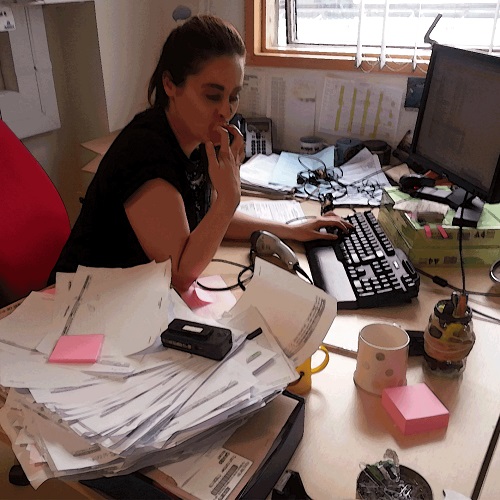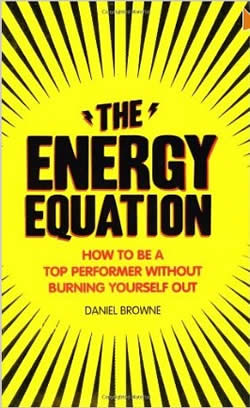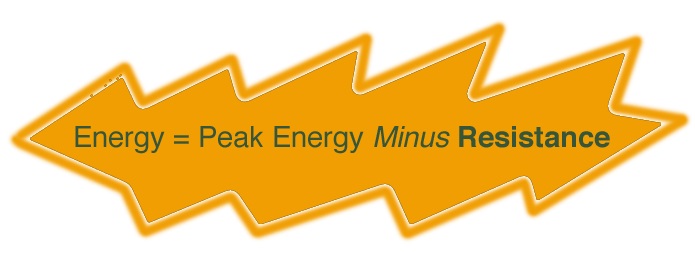Positive Health Online
Your Country

The Energy Equation: Better Work Performance
listed in stress, originally published in issue 216 - August 2014
The Ever Growing Problem of Stress
Stress is an increasing problem in our society. A third (32%) of UK companies said that employees often experience excessive pressure in their job and well over half of UK organisations (57%) reported their employees have been working greater hours than usual since the recession. In the USA, six out of 10 workers (61%) reported often experience excessive pressure on the job.
There are many factors that have contributed to this state of affairs, but we have gradually drifted into a culture of immediacy. The recent recession, company efficiency drives and costs savings have increased the workload for everyone, while the time in which to do it has decreased. The speed of work has also increased. Companies have become more competitive. Responsiveness and the ability to prove that you can get back to your client faster than your competitors has added to the work load. This paints a grim picture of too much work, not enough resources and not enough time to meet the new demands.

Traditionally, stress management has been used to deal with this pressure and the new tendency for developing resilience, however focusing on dealing with the negative aspects leads at best to managing a negative situation. By shifting the focus to what we really want – energy - rather than what we don’t want – stress - we manage our stress by default.
The Energy Equation
Daniel Browne, former city professional turned business and executive coach found the hectic lifestyle of his investment banking job challenging. Working 70-100 hours a week he struggled to meet work obligations and have time to enjoy life. He hardly slept, waking up in the night stressed about work. During the day he was tired and wired, surviving on coffee and croissants and as a result his health suffered. Determined to be able to deal with this work lifestyle and have a life, Daniel studied eastern philosophies such as Yoga, Meditation, Chi Kung as well as western disciplines of time management, NLP and productivity courses and put these together to create a practical system to manage persona energy and time.

The Energy Equation is the book and system created by Daniel Browne designed to help busy people overcome the problems of overwork, information overwhelm and stress and help them move towards a more balanced way of working and living. Readers of the book report better work performance, a reduction in stress and more time to accomplish things outside of work. Daniel now uses these techniques to help other city professionals and business owners manage their work load better.
The Principle of Energy Management
The main premise of the energy equation is the principle of efficient use of energy. From the science of physics we can observe that no system is completely energy efficient. For example a light bulb converts electricity to light, but some of that energy is wasted in the form of heat. The light is the wanted use of energy, the heat is the unwanted effect. In the same way not all of the energy we use is useful energy; some of it is wasted. So where does this energy go? In our case it’s not wasted as heat (we need heat). Instead it gets lost as stress and tension.
A simple of example of energy wastage: when you sit at a desk in an uncomfortable position, you are wasting energy using muscles in your shoulders and back tensing muscles which don’t need to be used; the result is tension or even pain. Stress is another example. When stressed we engage the body’s stress response which is there to get help us in life threatening situations, this is a vital waste of the bodies resources.
With a light bulb the efficiency loss is due to the resistance of the heating element; if you lower the resistance to electricity of the filament you have more energy for light. For the human body, if we lower the resistance which is mainly stress, we increase our efficiency. This leads us to the energy equation for the body:

The Energy Equation
Energy = Peak Energy minus Resistance
- Peak energy - the energy capacity we have available due to our physical body;
- Resistance - the resistance to that energy flowing or being utilized. This is principally stress or tension.
Simply put, the way to increase your energy is to increase your Peak energy capacity and actively reduce your resistance to the flow of this energy i.e. Stress.
The Four Energies
Now what is energy? Energy is defined as the capacity to do work. Energy exists in many different forms but for the human body we can split this out into physical, mental, emotional and spiritual energies. While they are all linked for practical purposes, distinguishing them makes it easier to think about. We will cover the physical and mental energies which are the key ones we use at work.
Physical Energies
The type of energy we are more familiar with is Physical energy - the level of vitality in our body. We have a basic awareness of our energy levels. We know when we have energy and when we are exhausted.
Most people who sit at a desk all day do not operate anywhere near their peak energy capacity. To get a great idea of peak energy, think of Stu Mittleman, the ultra-endurance runner who once ran 1,000 miles in 11 days and 19 hours. He would run for 21 hours a day and sleep only three hours in twenty-four. This is an extreme example but contrast that with the energy levels most of us have. Sufficient to work, come home, eat and sleep.
We are aware of what is needed to increase peak physical energy - this is all the things we know to do: exercise, eating the right foods, getting the right nutrition and adequate sleep. The more we become disciplined with this the more energy we will have.
On the other side of the equation is all we need to do to reduce stress. This includes correct posture, relaxation and taking breaks.
Managing Mental Energy
We’ve all experienced a state of flow where we became so immersed in what we are doing that time seemed to flow by. Having a high level of mental energy is having a focused, and concentrated mind able to apply itself to reasoning, critical thinking, creativity, problem solving and innovation. Having a sense of focus without the distractions that lead to poor focus and productivity.
What gets in the way or the resistance in our case is
- Dividing our attention too thinly and;
- Automatic unproductive thinking, better known as stress and worry.
With the amount of information it is possible to consume with our technology, the demand for our attention has never been greater. However it is deliberate focused attention that has us do our best work and make the most of the power of our brain. The more we focus the more our mental focus increases. Similarly too much continued distraction leads to the reduction in our capacity to focus.
Anything that gets in the way of focused attention is resistance. Distractions both external and internal (from our own thinking) need to be eliminated.
When we are in a high stress state of worry our thinking can become out of control. Our thoughts move at high speed but are incoherent and repetitive. Worrying is effectively a waste of brain power
Some great practices to increase mental energy are meditation, focusing on building concentration by deliberately focusing on one thing at a time.
On the resistance side, meditation also helps one to let go of too many thoughts. Practically in the office, focus on creating a no distraction environment as much as possible. Switch off email and only check it at certain times in the day. The same with social media or any alerts form a smartphone. Switch off your phone after work. Remember being on call divides a portion of your attention on being on call. And stops you being relaxed.
Breathing and Body Awareness
One of the key things we can do to manage our energy is to develop an awareness of what’s going on in our body. Our body gives us all the feedback we need, and can tell us what’s going on in all of our energetic domains.
The first step, correct breathing, is the core foundation for energy - when you breathe correctly, you supply more oxygen to the blood, everything else follows naturally.
The next step is body mindfulness, the tuning into and developing a greater awareness of what’s going on in your body. You will then notice where your energy blockages, areas of stress and tension are.
Pay attention to stress stores: these are the areas in the body where the tell-tale signs for stress are located, principally the neck, shoulders, forehead and stomach. By regularly tuning into your stress stores, not only can you detect stress earlier, you can then start to do something about it.
Breathing works in combination with body mindfulness, deep breathing enables you to relax; the more relaxation you can maintain the more fully you will become present to the state of your body. The breath can then be used to direct internal energy to relax and energize parts of the body. Similar to chi practices, by breathing into areas that are stressed you can release any pain and tension, similar to an internal massage using the breath.
The power of these techniques is to give you greater control over your body. They have been used to get rid of headaches, eye strain and other tensions in the body.
The mind-body connection is powerful so initially you can gain big wins in gaining back your lost energy by just releasing the tension your stress stores. The more you practise the more you will find more subtle stores of energy. You will then start to develop body intuition. For example tension in the lower stomach is often associated with stress. By noticing these feelings you will be then directed to where your thoughts are producing fear.
The other parts of the book include how to increase the efficiency of your sleep, how to organize and manage your time and energy in alignment with your body and how to build the necessary systems and structures to increase your productivity and performance in life.
From using the practices in the Energy Equation people have reported less stress, greater productivity, and more energy.
Comments:
-
No Article Comments available